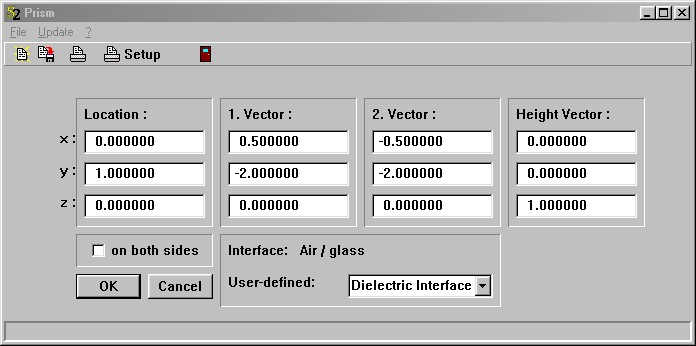
Prism objects are based on a triangle. The volume of the prism is created by moving the base triangle along a vector called height vector. In most cases the height vector will be perpendicular to the triangle but it need not be. The parameters of prisms are set in dialogs like the following:

Location, Vector 1 and Vector 2 define the base triangle as describe previously for flat triangles. Height vector gives the direction and size of the shift of the triangle. Note that the shift is done in both directions, upwards and downwards. In the example given above the total height of the prism in z-direction is 2 cm.
The definition of the interface covering the prism is the same as explained for rectangles. All 5 prism 'subsurfaces' have the same interface, with the surface normal pointing outward. The picture below shows some rays travelling through a glass prism:
